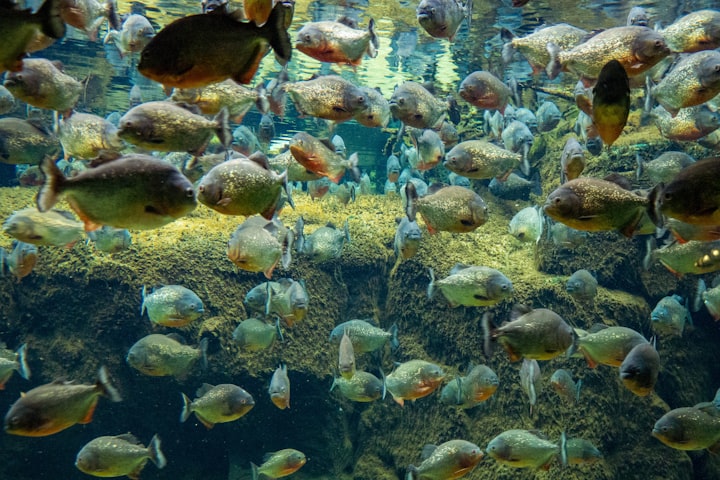Piranhas: Separating Fact from Fiction
Your Guide to Surviving the Amazon Water

Introduction:
Picture yourself along the lush banks of the Amazon River, admiring the exotic wildlife and breathtaking scenery. But suddenly, you slip and find yourself plunging into the water. Panic sets in as you remember the stories of fearsome piranhas lurking beneath the surface. Are you doomed? Will your fall trigger a fatal feeding frenzy? Let's dive deep into the world of piranhas to unravel the truth and understand your real fate in this perilous scenario.
The Diverse World of Piranhas:
Piranhas, often depicted as nature's ruthless killers, are a group of fish shrouded in myths and misconceptions. There are over 30 piranha species, all inhabiting the freshwater ecosystems of South America. What defines these fish are their sharp, interlocking teeth that form a formidable jawline. While piranhas are undoubtedly skilled predators, their feeding habits vary significantly across species. Some are omnivorous, supplementing their diets with insects, crustaceans, worms, and fruits. Others, like the red-bellied piranhas, are both hunters and scavengers. Certain species, such as wimple piranhas, have specific dietary preferences, often targeting the scales of other fish.
The Myth of Aggressive Packs:
The reputation of piranhas as relentless pack hunters is a widespread misconception. Red-bellied piranhas, commonly believed to be highly aggressive, often live in shoals of 10 to 100 individuals. Contrary to popular belief, their group-living strategy isn't primarily for cooperative hunting but serves as protection against their numerous predators. Mature red-bellied piranhas typically position themselves at the center of the shoal, the safest spot. Intriguingly, these fish communicate with one another. They emit barking and thudding sounds during interactions, which include confrontations, fights, and competition for food. These sounds likely represent only a fraction of their communication repertoire.
When Piranhas Get Aggressive with Humans:
While piranha attacks on humans are rare, they do occur in specific scenarios. Most incidents happen when humans handle piranhas, spill food or clean fish in the water, or disturb them during mating or egg-guarding activities. Starvation stress can also lead to bold and aggressive behavior, theoretically resulting in feeding frenzies, although such events are extremely rare.
Theodore Roosevelt and the Myth of the Feeding Frenzy:
The international infamy of piranhas, particularly the image of a feeding frenzy, can be partly attributed to former US President Theodore Roosevelt. In his 1914 bestselling book, he sensationalized piranhas, describing them as "the most ferocious fish in the world" and claiming they could devour an entire cow or even a human alive upon detecting the scent of blood. However, Roosevelt's account is widely regarded as circumstantial and misleading. His witnessed "feeding frenzy" may have been a staged spectacle involving starved red-bellied piranhas and a cow carcass.
Surviving a Plunge into Piranha Waters:
Now, let's return to your scenario – falling into piranha-infested waters. Assuming these are red-bellied piranhas and given that it's the Amazon River, they likely have an ample food supply. Fortunately, you're not accompanied by fish guts, and you're not disturbing piranha mating or egg-guarding activities. In such a situation, the piranhas are more likely to avoid you. Experts recommend calmly swimming or wading to shore, as splashing may attract their attention. Piranhas possess formidable teeth but rarely pose a threat to humans, as they typically have more suitable prey to target. Your exit from the water reveals that there's no feeding frenzy, and you're whole and unharmed.
Conclusion:
In conclusion, the myths surrounding piranhas have perpetuated their infamous reputation as ruthless killers. However, these fish are diverse in their habits and typically pose minimal danger to humans. While piranha attacks do occur in specific circumstances, they are exceedingly rare. So, if you ever find yourself unexpectedly immersed in piranha-infested waters, remember to stay calm, swim quietly to shore, and rest assured that the sensationalized feeding frenzy is just a myth. Piranhas, like many creatures in the wild, are far more complex and misunderstood than their reputation suggests.





Comments
There are no comments for this story
Be the first to respond and start the conversation.